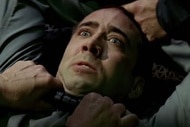Create a free profile to get unlimited access to exclusive videos, sweepstakes, and more!
WATCH C2E2: Boruto cast dives into ninja DNA
If you peer at ninja DNA under a microscope, you might find some reptilian genes merged with it.
Boruto's Cherami Leigh (Sarada) and Robbie Daymond (Mitsuki) were both huge anime fans before they ever voiced any character. They told SYFY WIRE's Karama Horne everything you need to know about the genetic makeup of a Slytherin ninja clone, questionable anime parenting, and more things that may or may not happen on this planet.
Sarada doesn't exactly have the most involved parents ever, something you often see in anime — teens are running around trying to save the world while their parents are either absent or just totally oblivious. Even Ichigo and Uryu's dads in Bleach admitted that neither of them qualified to be father of the year (meanwhile their sons were off somewhere fighting evil spirits in the middle of the night). Back to Boruto, passing on your DNA just because it's part your jutsu is just not enough to raise a human being.
"This ninja stuff is more complicated than we thought," Leigh said quasi-seriously.
Mitsuki is even worse off because he's the offspring of snake ninjas. It can't be easy being the artificial son of a rebel ninja turned body snatcher who created his own village just so he could do horrid experiments to find a way to make himself immortal. Though Mitsuki is partial clone of this abomination (still enough to freak anyone out), he's oddly chill. That should have you concerned.
"He's a stone-cold killer, yeah, absolutely," said Daymond. "Super dangerous."
Never mind the homicidal tendencies; that's actually one of Leigh's favorite things about doing scenes involving Sarada, Mitsuki and Boruto. There is a sort of tension about whether Mitsuki is going to act more human or inhuman, but he does lean more human sometimes and even shows some bro love to Boruto.
Watch the video to find out more about this weird science!
This article was contributed to by Elizabeth Rayne.














